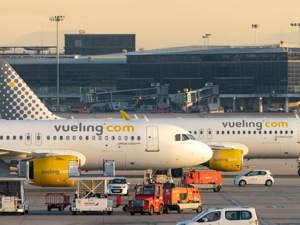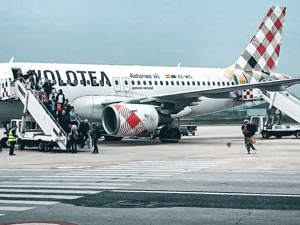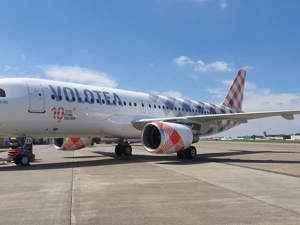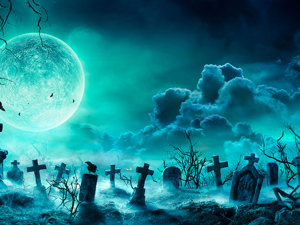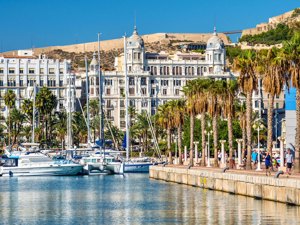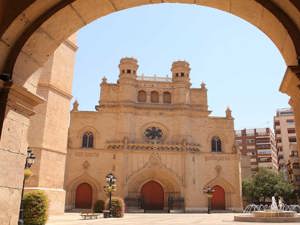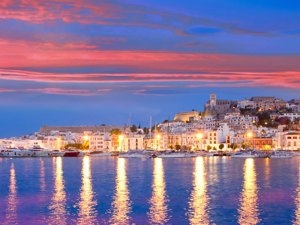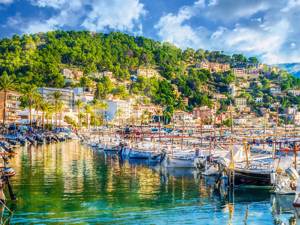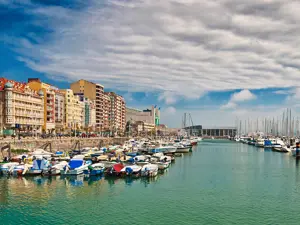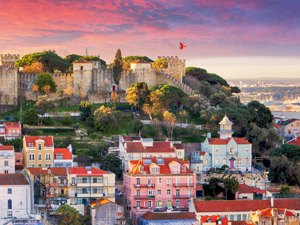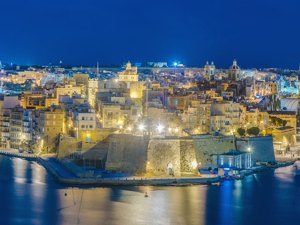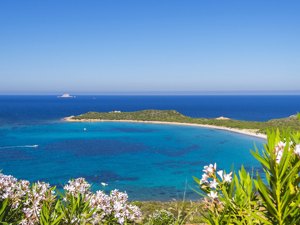A mosaic of art and architecture
It doesn’t seem an exaggeration to call Barcelona a genuine open-air museum. This Mediterranean, cosmopolitan city offers Roman remains, Medieval districts and some exquisite expressions of Modernism and twentieth-century avant-garde architecture.

Barcelona: Copyright © Sisterscom.com / Shutterstock
Historic buildings heritage of humanity in Barcelona: UNESCO has declared the most representative buildings by the Catalan architects Antoni Gaudí and Lluís Doménech i Montaner World Heritage sites. The variety and richness of Barcelona’s historical heritage offers inspiration for itineraries among the different districts in discovery of the many facets of the city.

Casa Batllo by Antoni Gaudí. Barcelona: Copyright © Sisterscom.com / Shutterstock
The original centre, surrounded by Roman walls, is the Gothic district, which has narrow alleyways, compact squares and delightful corners that reveal numerous civil and religious buildings such as the Church of La Mercè, the patron saint of Barcelona. Medieval palaces such as the Casa dels Canonges, Casa de la Pia Almoina and Casa d'Ardiaca stand around the imposing Barcelona Cathedral, while another collection of wonderful buildings, the Royal Palace, Chapel of Saint Agatha and the City History Museum, can be found near the Plaça del Rei. Important institutional buildings overlook the square of Sant Jaume, such as the Palau de la Generalitat and the City Hall.

Roman walls and Placa Nova gate. Barcelona: Copyright © Sisterscom.com / Shutterstock
In just a few metres the architecture passes from the Gothic style of the Church of Santa Maria del Mar to the modernism of the Palace of Catalan Music. The Sagrada Familia Basilica, Casa Lleó Morera, Casa Amatller and Casa Batlló are just some of the numerous modernist gems that enhance the city.
Sagrada Familia
The great atonement church. In 1883, the ingenious Gaudí accepted the task of directing work on this great church, to which he remained dedicated until his death. Work on this great religious monument still continues today.

Sagrada Familia by Antoni Gaudí. Barcelona: Copyright © Sisterscom.com / Shutterstock
The first architect who began the construction designed a neo-Gothic building, but Gaudí changed the plans to match his own character and style, completing the Chapel of San José, the crypt and the entrance of the Nativity.
The facades and external parts are characterised by a great profusion of decorative elements in bright colours. Currently 8 of the 12 towers depicting the 12 apostles have been built with pierced stonework like a bee hive. The design envisaged 18 - the other six represent the four Evangelists, the Virgin Mary and, the tallest of all, Jesus Christ.

Rambla. Barcelona: Copyright © Sisterscom.com / Shutterstock
The central area of Eixample has been built following a vast grid pattern with wide streets and chamfered corners that join the irregular pattern of the old districts and the outlying centres with the surrounding hills.
The heart of the city both day and night, this unusual road is 1.2 km long. It begins at Placa Catalunya and ends at the monument of Christopher Columbus and has five different names/parts: Canaletes, Estudios, las Flores, del Centro, de Santa Monica.
La Rambla, one of the main streets of the historic centre, is one of the best places to begin a tour of the city. This street leads to the Romanesque Santa Anna Church, the bird market and flower stalls, and offers excellent examples of Renaissance and Baroque architecture en route.

Barcelona: Copyright © Sisterscom.com / Shutterstock
Barcelona is city that overlooks the ocean and its seafront is also a compendium of different artistic styles. Buildings and facilities inherited from the 1992 Olympics sit in beautiful parkland. Culture in the city co-habits with its nightlife.
Night clubs, live music venues and restaurants are concentrated in the most symbolic areas of the city. The sophisticated environment of Diagonal Street, the picturesque bars of the Gràcia district and the open-air bars of the old port, Olympic Port and almost any square in the city are just some of the attractions of a night in Barcelona.
The Catalan Cuisine
Fresh ingredients from the Mediterranean area are used in Catalan cuisine, which ranges from seafood dishes along the coast to meat dishes in the inland areas.
Dishes to try: Catalan Zarzuela (fish and seafood casserole), Esqueixada (cold codfish cut into strips and garnished with chilli, tomatoes, onions, olives, oil and vinegar), Arros negro (rice, cuttlefish, fish, seafood, onion, garlic and tomatoes seasoned with olive oil and cuttlefish ink), Catalan Asado chicken (chicken with dried fruit) and Catalan Cream (soft cream with a crunchy layer of caramelized sugar).
Text by Luca Lembi
Update by Nicolò Villa
Avion Tourism Magazine
Photos for editorial use only: Sisterscom.com; Shutterstock / Depositphotos
Copyright © Sisterscom.com
Video: www.barcelonaturisme.com
Tourism Board
www.barcelonaturisme.com
www.spain.info
Partnership with Booking.com
Where to sleep in Barcelona
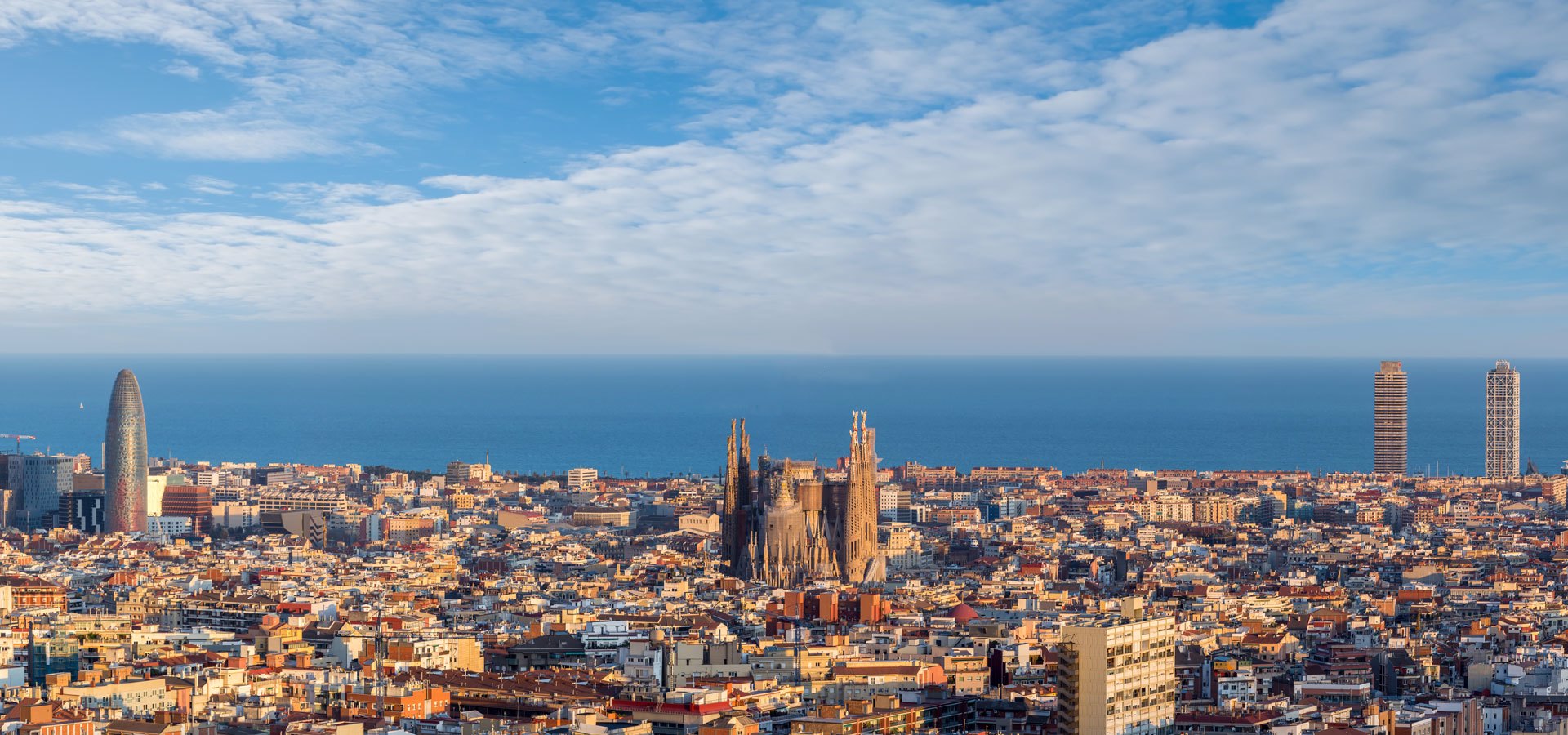 Barcelona: Copyright © Sisterscom.com / Shutterstock
Barcelona: Copyright © Sisterscom.com / ShutterstockBarcelona is a welcoming city and offers different possibilities for accommodation.
To find the ideal hotel and the best offers you can do a search for the stars but also for districts or landmarks.
DISTRICTS
Hotels in the districts
LANDMARKS
Hotels in tourist areas
AIRPORT
Hotels near the airport
WHERE TO GO IN BARCELONA
Monuments of Barcelona

Barcelona: Copyright © Sisterscom.com / Shutterstock
CASA BATLLO'
A masterful work by Antonio Gaudì, the Catalan architect, built between 1904 and 1906, and the symbol of modernist Barcelona. In addition to its beautiful façade, its interiors feature artistic and architectural details typical of Gaudì’s style: light, colour and form united with iron, glass, wood and stone.
Casa Batlló is located in Passeig de Gràcia, one of the most important streets in Barcelona with shops and characteristic modernist buildings. Casa Batlló is a UNESCO World Heritage Site.

Barcelona: Copyright © Sisterscom.com / Shutterstock
PARC GUELL
This work is another unfinished project by Antoni Gaudi, which was conceived as a urban garden with sinuous Art Nouveau architecture. It is today a public park full of imagination, fantasy and colours. Brightly coloured lizards greet visitors as the arrive. The architecture inside the park, inspired by nature, use the mosaic technique with pieces of pottery and tile. Park Güell is a World Heritage status by UNESCO since 1984.

Barcelona: Copyright © Sisterscom.com / Shutterstock
CATEDRAL DE LA SANTA CREU I SANTA EULALIA
The Catedral de la Santa Creu i Santa Eulàlia reflects different architectural styles but is a Gothic building. Work began in 1298 on the site of an early Christian basilica of the fourth century.
The chapel of Santa Llúcia was part of the Romanesque church built before the Gothic cathedral, while the oldest gate is the Porta de Sant Iu. The interior is very beautiful with 25 side chapels, the 14th century cloister, the pulpit, the crypt and the windows.

Barcelona: Copyright © Sisterscom.com / Shutterstock
SAGRADA FAMILIA
In 1882, the original Sagrada Família Gothic church project, designed by Francisco de Paula Villar, was taken over by the young Antoni Gaudí, who transformed it into the most fascinating church of all time. The architecture of Sagrada Família has become the symbol of Barcelona. There is also a museum, opened in 1961 and located in the semi-basement on the Passion façade, which exhibits sketches, plaster models and photos to discover history and evolution of the beautiful basilica.

Barcelona: Copyright © Sisterscom.com / Shutterstock
BOQUERIA MARKET
This is the local market of Barcelona, which was first opened on St. Joseph’s Day, 19th March 1840, after four years of construction work. Today it is the city’s oldest and most complete market selling vegetables, meat, fish and thousands of other products on imaginatively presented stalls.

Barcelona: Copyright © Sisterscom.com / Shutterstock
ESTADI OLIMPIC MONTJUIC LUIS COMPANYS
The stadium was opened on 20 May 1929 and in 1992 hosted the Olympic Games. A team of architects were commissioned to restructure the stadium: the outer walls were restored while the interior was restructured to hold 54,000 people.
Museums of Barcelona

Barcelona: Copyright © Sisterscom.com / Shutterstock
MACBA
The Barcelona Museum of Contemporary Art brings together a significant collection of artistic creations from the last fifty years. In addition to its permanent collection, it offers visitors temporary shows and organises activities related to art and culture.

Barcelona: Copyright © Sisterscom.com / Shutterstock
PICASSO MUSEUM
The museum portrays the relationship of the artist with the city of Barcelona. The permanent collection houses more than 3,800 works from Picasso’s different artistic periods, including the extraordinary “Las Meninas” series belonging to the artist’s “Blue Period”.

Barcelona: Copyright © Sisterscom.com / Shutterstock
JOAN MIRO' FOUNDATION
The museum’s collection features more than 14,000 works that follow the artistic path of Mirò and the techniques he used during his career. In addition to works by the artist, a small collection of contemporary art works are also on show.
Partnership with GetYourGuide
Excursions and tours in Barcelona

Barcelona: Copyright © Sisterscom.com / Shutterstock
THE MAGIC FOUNTAIN - Fonts de Montjuic
The project, the result of the inspiration of the engineer Carles Buigas, offers a spectacle of water and colours to the rhythm of music. It was completed in 1929 for the Universal Exhibition and today the fountain’s waters are an interesting feature of Maria Cristina Road.

Barcelona: Copyright © Sisterscom.com / Shutterstock
CITADEL PARK
Even in the centre of the city, it’s not difficult to find a place to relax: the Parc de la Ciutadella is the largest in Barcelona and the “green lung” of the Catalan city. In the Parc de la Ciutadella you can amire the Castell dels Tres Dragons, the waterfall and lake (designed by Fontseré), the plant house, the Umbracle, and glass house, the Hivernacle.

Barcelona: Copyright © Sisterscom.com / Shutterstock
TOUR BY TOURIST BUS
A double-decker hop-on hop-off bus tour to discover the main attractions of Barcelona such us the Sagrada Família, the Parc Güell, the Port Olímpic, the Barcelona Cathedral Camp Nou and much more. The ticket is valid for two routes, each with stops at the best sites in Barcelona. The buses also have an electric roof on top for use in the event of rain and are adapted for people with limited mobility. Audio guide in 15 languages and free Wi-Fi on board. Duration: 1 - 2 days.

Barcelona: Copyright © Sisterscom.com / Shutterstock
SAGRADA FAMILIA: FAST-TRACK ACCESS AND TOUR
Fast track entry and tour of the Basilica and the Museum of Sagrada Familia, designed by Antoni Gaudí, and one of the world’s most visited buildings. After the visit to the interior of the Sagrada Familia, entrance to the museum to discover the history of the Basilica and the life of Antoni Gaudí. The tour includes: monolingual or bilingual official guide, radio guide system, fast track entrance to the Basilica and Sagrada Familia guided tour. Duration 1.5 hours.

Barcelona: Copyright © Sisterscom.com / Shutterstock
WALKING TOUR AND PICASSO MUSEUM
Guided tour by foot in the Bohemian neighborhood of Barcelona where Pablo Picasso lived with his favorite places such us the Els Quatre Gats restaurant, the meeting place of intellectuals in Picasso’s time, and the Llotja de Mar art school where he studied. Then, guided tour of the Picasso Museum with the world’s most important collection of works from Picasso’s youth and formative years, from the more classical style to the invention of Cubism. Duration: 2 hours.

Barcelona: Copyright © Sisterscom.com / Shutterstock
PARK GÜELL SKIP THE QUEUE AND TOUR
Guided tour of Park Güell, a modernist masterpiece by the Spanish architect, Antoni Gaudí and one of the most popular attractions in Barcelona. Skip the ticket line and discover, with a licensed guide, the public park, the legendary dragon stairwell, the famous “El Drac” salamander statue and Hypostyle Room. Admire also the coloured mosaics, the colonnades designed by Gaudí and a panoramic views of Barcelona from the main terrace of the park. Duration: 1 hour.

Barcelona: Copyright © Sisterscom.com / Shutterstock
WALKING TOUR; BY HELICOPTER AND BY BOAT
Tour by land, sea, and air to discover Barcelona. Walking tour of the Gothic Quarter to explore hidden squares and picturesque churches to Port Vell. Here, board either a Turkish Goleta or an eco-boat and sail along the coast for panoramic views of the city’s skyline. Later, transfer by van to the heliport. Glide up into the sky by helicopter, and enjoy views of Port Vell, Barceloneta, the Olympic Port, Olympic Village and Besòs River. Duration: 4 hours.
 Barcelona: Copyright © Sisterscom.com / Shutterstock
Barcelona: Copyright © Sisterscom.com / ShutterstockTOUR OF MONTSERRAT MONASTERY
A half or full day tour to visit Montserrat, the Barcelona’s holy mountain. The tour includes: private transfer with conditioned air; multilingual professional mountain guide; guided tour of the mountain and the abbey; tickets for cable car and Sant Joan’s railway; fresh fruit; show choir singing of Montserrat; 1 hour of hiking in the park; lunch at farmhouse (3-course menu, dessert, drinks - only for tour of full day). Tour for maximum 12/15 people. Duration 5.5 - 7.5 hours.
Discover all tours
News & Useful info
Shopping
Luxury
You might be interested in
Other destinations
Airports nearby Barcelona







